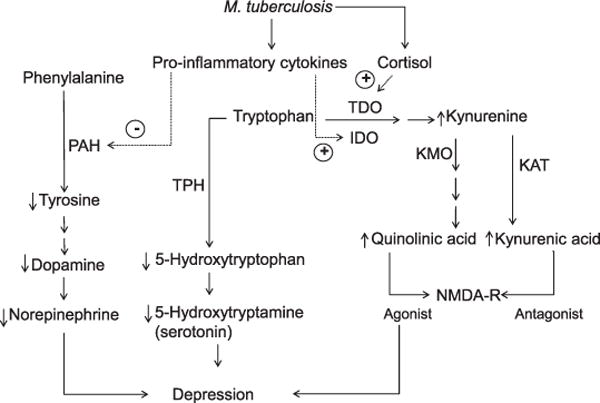Figure 3.

Effects of M. tuberculosis hypothesized to promote excitotoxicity and reduced monoaminergic neurotransmission, leading to depression. Infection with M. tuberculosis activates expression of pro-inflammatory cytokines, which stimulate the production of kynurenine and its metabolites, quinolinic acid and kynurenic acid, with opposing effects on NMDA-Rs (right side of diagram), and may lower production of serotonin (5-hydroxytryptamine), dopamine, and norepinephrine (left side). Tryptophan and kynurenine cross the blood-brain barrier, and can undergo the metabolic steps pictured here in the periphery or central nervous system. Kynurenine can be converted to kynurenic acid in astroglia or to quinolinic acid in infiltrating macrophages and microglia. Quinolinic acid increases glutamate release and leads to lipid peroxidation, thus contributing to excitotoxicity, oxidative stress and, ultimately, neurodegeneration. TDO = tryptophan 2,3-dioxygenase; IDO = indoleamine 2,3-dioxygenase; PAH = phenylalanine 4-hydroxylase; KMO = kynurenine-3-monooxygenase (also known as kynurenine-3-hydroxylase); KAT = kynurenine aminotransferases; TPH = tryptophan hydroxylase; NMDA-R = N-methyl-D-aspartate receptor.
